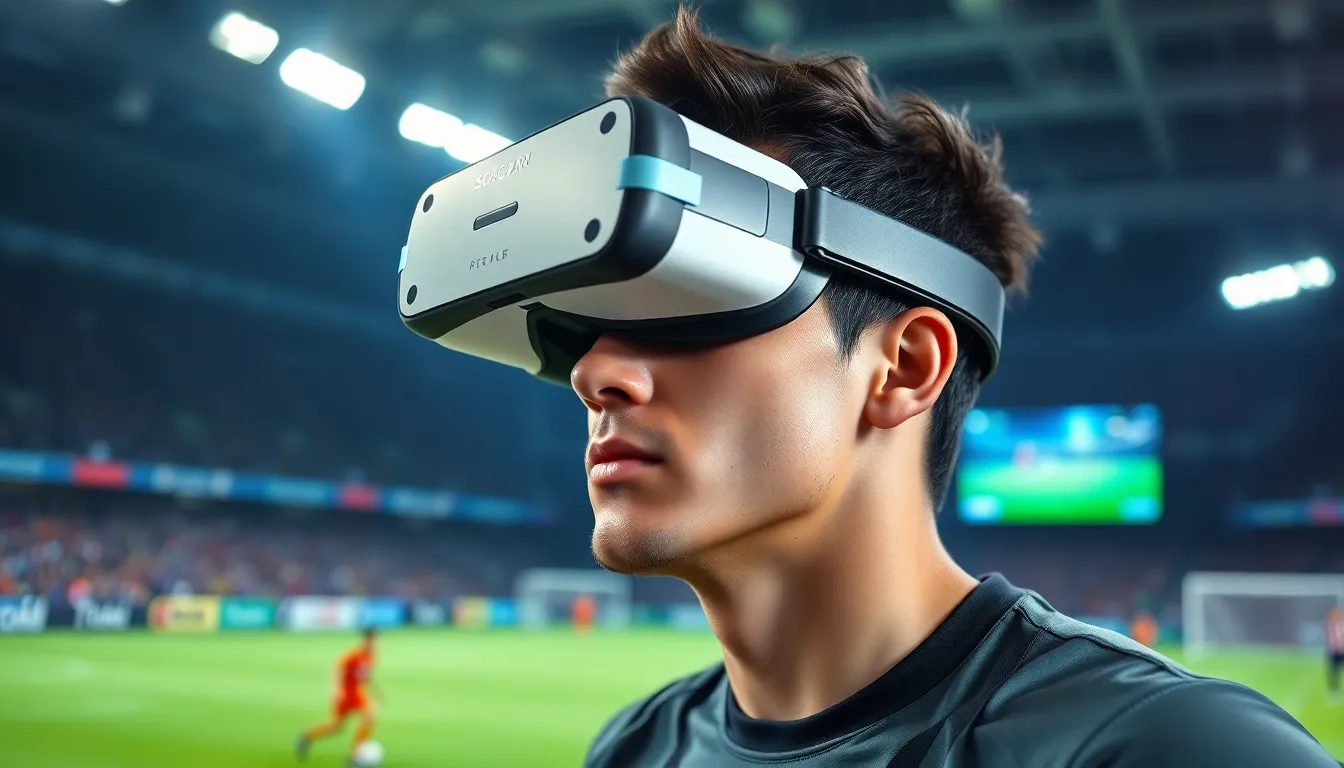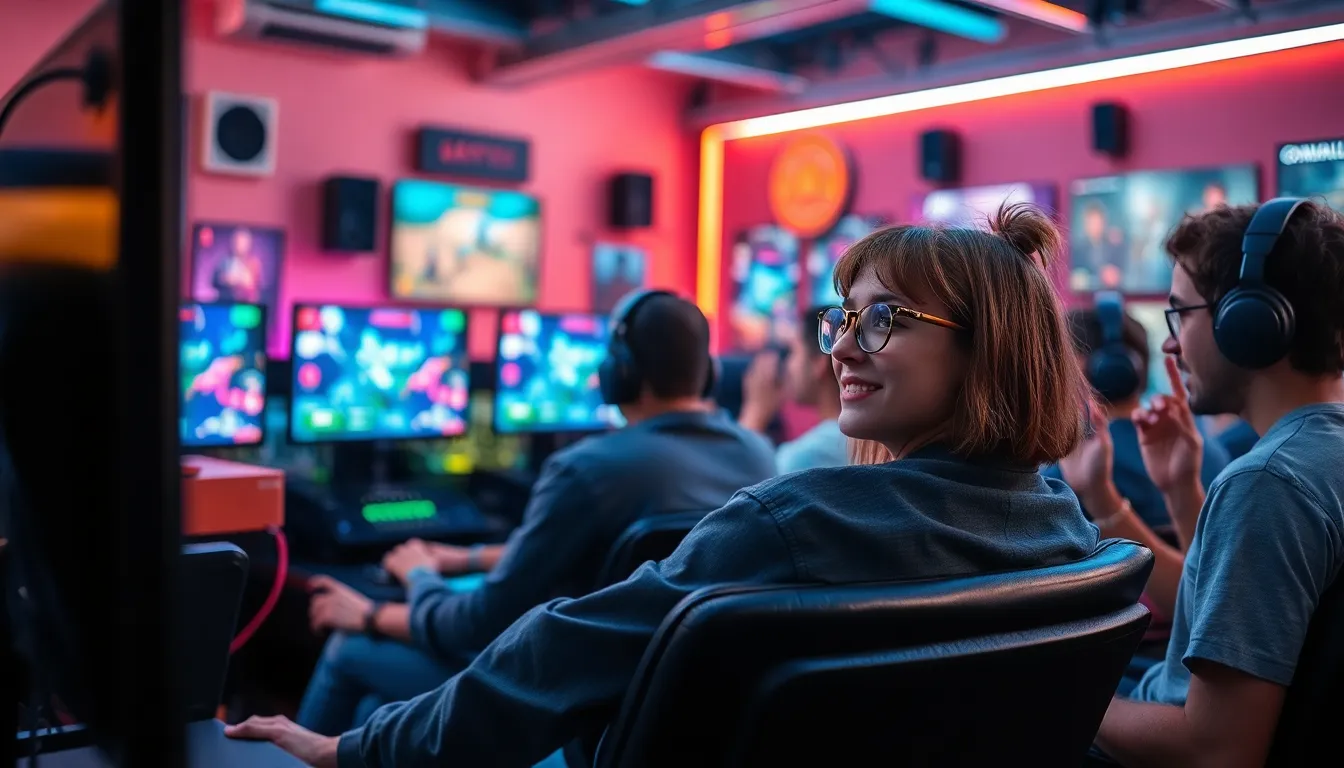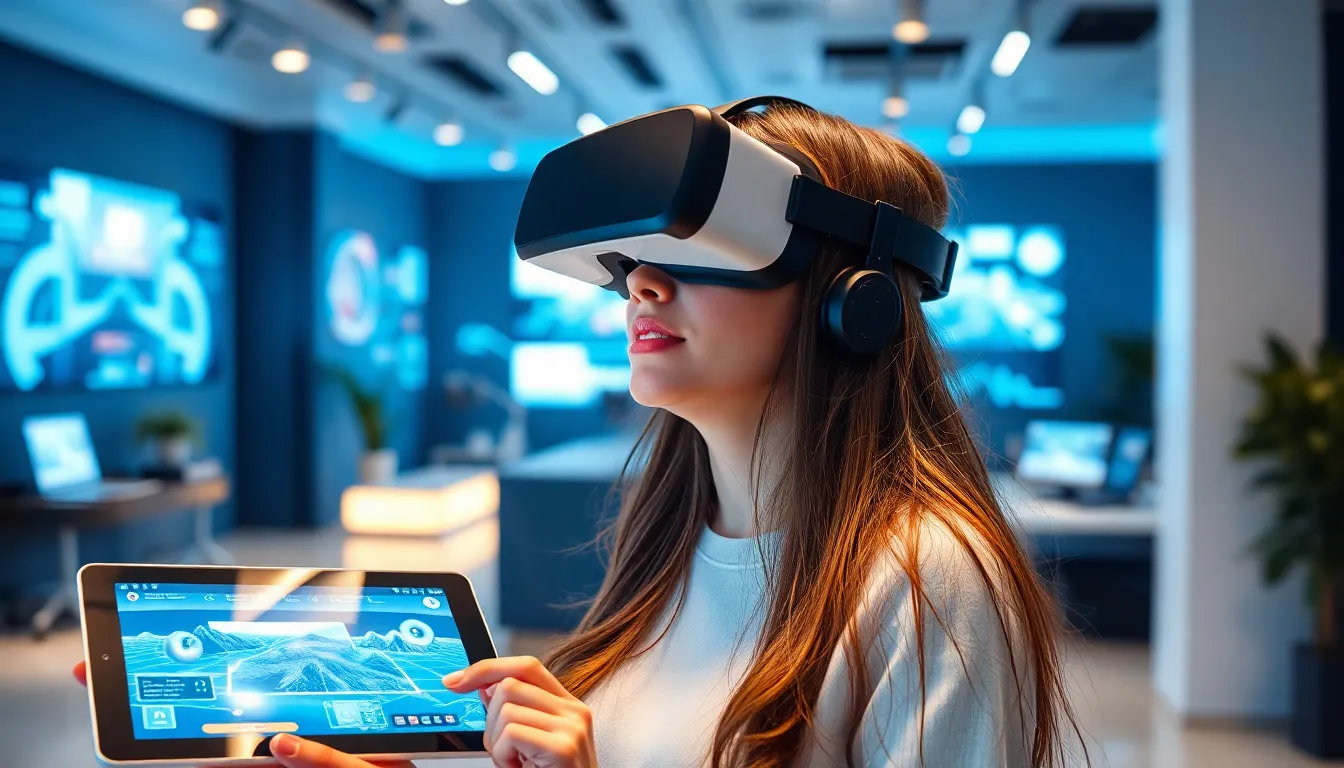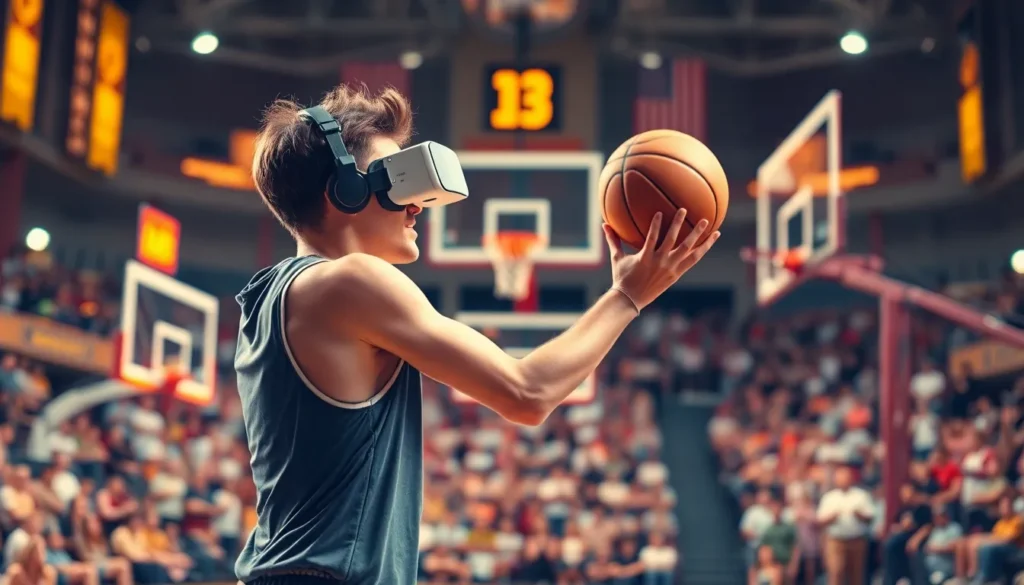Table of Contents
ToggleImagine stepping onto the field without ever leaving your living room. Sports VR is revolutionizing how fans and athletes experience their favorite games. It’s like having a front-row seat at the Super Bowl while still in your pajamas. With the power of virtual reality, sports enthusiasts can now immerse themselves in thrilling environments, whether it’s shooting hoops with their favorite player or scoring a goal in a packed stadium.
What Is Sports VR?
Sports VR refers to the application of virtual reality technology in the realm of sports. This innovation enables fans and athletes to immerse themselves in a simulated sports environment. With VR, users can experience thrilling moments, like feeling the intensity of a last-minute game-winning shot or the thrill of a game-winning goal.
Athletes benefit from this technology by training in a controlled, virtual setting that replicates real-life scenarios. This enhances their decision-making skills and situational awareness. Engaging with sports VR allows players to visualize their performance, analyze strategies, and receive immediate feedback without the physical wear and tear of traditional training.
VR setups can include headsets and motion tracking to create realistic experiences. These setups allow fans to visualize themselves on the field or court, enhancing the overall sports viewing experience. Spectators can enjoy the sensation of sitting courtside at a basketball game or being in the middle of a football field during critical plays.
Popular platforms provide users with various sports experiences. Users can choose to play games that replicate real-life sports or explore interactive simulations that improve physical skills. Innovative companies continuously develop new VR applications, offering unique experiences that keep fans engaged and entertained.
Advanced graphics and realistic scenarios are pivotal elements of sports VR. These features contribute to creating an emotionally charged atmosphere that rivals live events. As the technology evolves, its potential to transform how sports are played and consumed continues to grow, making sports VR an exciting frontier in both athletic training and fan engagement.
Benefits of Sports VR

Sports VR offers numerous advantages for both athletes and fans. Its ability to create immersive experiences transforms traditional interaction with sports.
Enhanced Training Experiences
Athletes gain a competitive edge through enhanced training experiences provided by Sports VR. VR technology simulates realistic game scenarios, allowing athletes to practice critical skills in controlled settings. With this immersive approach, decision-making and situational awareness improve significantly. Coaches utilize VR to analyze performance, providing instant feedback that accelerates skill development. Those involved in sports can engage in drills and exercises tailored to their specific needs, making each training session more impactful. Overall, the ability to visualize game situations contributes to better preparation for actual matches.
Increased Engagement for Fans
Increased engagement for fans marks another significant benefit of Sports VR. Fans can step into the action, experiencing games from unique perspectives that enhance their enjoyment. VR platforms offer virtual attendance at live events, making it possible for fans to feel the excitement as if they were in the stadium. Interactive experiences include playing alongside favorite athletes, participating in virtual challenges, and sharing moments with other fans. This level of engagement fosters a deeper emotional connection to the sport and creates a sense of community. Overall, Sports VR revolutionizes how fans connect with their favorite teams and players.
Popular Sports VR Applications
Virtual reality reshapes participation in sports by providing innovative applications for training and spectator experiences. Several platforms utilize this technology to enhance athletic performance and fan engagement.
Simulation Training for Athletes
Simulation training offers athletes immersive environments that mimic real-game conditions. Such realism fosters improved decision-making skills through repeated practice scenarios. Training programs like STRIVR and vSports allow players to visualize plays and refine strategies effectively. Coaches can assess performance in virtual settings, providing personalized feedback that results in significant skill enhancement. Athletes train safely while pushing their limits, which facilitates muscle memory development and better prepares them for actual competition.
Virtual Spectator Experiences
Virtual spectator experiences transform how fans connect with live events. Platforms such as Oculus Venues and NextVR enable viewers to watch games from courtside seats or other exclusive vantage points. Immersive environments allow fans to feel the adrenaline of the game, providing a sense of presence as if attending in person. Enhanced 360-degree videos capture action from multiple angles, allowing for personalized viewing experiences. Fans can interact with fellow enthusiasts during shared events, creating meaningful connections and fostering a stronger community.
Challenges Facing Sports VR
Sports VR faces several challenges that hinder its growth and acceptance. These obstacles include technical limitations and adoption barriers.
Technical Limitations
Technical limitations significantly impact user experience in sports VR. Current VR headsets often lack resolution and field of view, which can detract from immersion. Latency issues sometimes disrupt interactions, creating a disconnect between user actions and virtual responses. Hardware requirements for high-quality VR experiences can be prohibitive, deterring casual users and smaller venues. The content availability remains sparse, with only a handful of sports simulations offering comprehensive experiences. These factors collectively hinder the full realization of sports VR’s potential.
Adoption Barriers
Adoption barriers present additional challenges for sports VR technology. High costs associated with advanced VR setups prevent widespread use among fans and athletes. Many potential users remain unaware of VR’s benefits, limiting market expansion. Compatibility issues across different platforms can also confuse potential customers, making it difficult to access varied experiences. Additionally, concerns about physical discomfort, like motion sickness, continue to discourage participation. These obstacles must be addressed to enhance the growth of sports VR.
Future Trends in Sports VR
Emerging technologies continue to reshape Sports VR experiences. Artificial intelligence integration enhances the realism of training simulations, adapting environments to athletes’ skill levels. Enhancements in motion tracking provide players with more accurate feedback, allowing for specific skill development.
Notably, 5G connectivity stands to revolutionize the delivery of live sports events through VR. Faster speeds enable seamless streaming with minimal latency, allowing fans to enjoy real-time interaction with live games. Immersive experiences become even more engaging as augmented reality merges with VR, blending digital content with real-world environments.
Developers also focus on creating personalized fan experiences. Customization options for virtual environments allow users to attend games from unique perspectives, such as courtside seats or field-level views. These innovations enhance viewer engagement, leading to deeper emotional connections with teams.
Collaborative experiences represent another trend, enabling fans to watch games together regardless of location. Multi-user VR platforms allow friends and family to connect during events, sharing reactions and discussions in a virtual setting. Social interactions enhance the overall enjoyment of watching sports.
Sustainability becomes increasingly important in Sports VR development. Eco-friendly practices in hardware production and software development work toward reducing environmental impact. Organizations prioritize responsible innovation, ensuring that the growth of VR technologies aligns with global sustainability goals.
Investment in esports continues to grow, reflecting the increasing popularity of competitive gaming. Virtual training tools for esports professionals mirror traditional sports VR systems, enhancing players’ skills and strategies. This trend links the realms of traditional sports and gaming, expanding the audience for VR experiences.
Sports VR is reshaping how fans and athletes interact with their favorite games. The immersive experiences it offers not only enhance fan engagement but also provide athletes with advanced training tools that mimic real-life scenarios. As technology continues to evolve, the potential for Sports VR to create unique and personalized experiences will only grow.
Addressing current challenges will be crucial for wider adoption. Innovations like improved motion tracking and the integration of AI promise to enhance realism and user satisfaction. With the rise of 5G and a focus on sustainability, the future of Sports VR looks bright. This technology is set to revolutionize the sports landscape, making it an exciting time for both athletes and fans alike.







